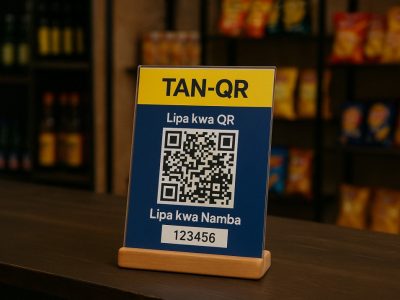As Tanzania rapidly adopts digital financial systems, one innovation is central to making payments more seamless, inclusive, and interoperable: TAN-QR.
TAN-QR, short for Tanzania Quick Response Code, is a national QR code payment standard introduced and mandated by the Bank of Tanzania to streamline and unify merchant payments across all financial service providers (FSPs), mobile money operators, and banks. With TAN-QR, businesses can accept payments from any customer, regardless of the mobile network or banking app they use, by simply displaying a single, standardized QR code.
This article explains how TAN-QR works, the difference between static and dynamic QR codes, why the system matters, and how businesses across Tanzania can benefit.
What Is TAN-QR?
TAN-QR is a standardized QR code framework that enables businesses and service providers to receive payments through a scannable code accepted by all licensed financial service providers in Tanzania.
Whether a customer uses Vodacom M-Pesa, Airtel Money, Tigo Pesa, Halopesa, NMB, CRDB, or another mobile app, they can scan the same TAN-QR code to make payments, eliminating the need for merchants to juggle multiple QR codes from different providers.
The Bank of Tanzania officially established TAN-QR in 2022 through a circular that gave financial service providers a defined timeline to adopt and align all existing QR-based systems with the national standard. The goal is to enhance payment efficiency, promote interoperability, and reduce fragmentation in the payment ecosystem.
How TAN-QR Works
- QR Code Generation
Businesses register with a TAN-QR-compliant payment service provider (PSP), Mobile Network Operator (MNO) or Bank, such as ClickPesa or a licensed bank, which generates a unique QR code. - Customer Scan & Payment
Customers scan the QR code using any compatible mobile app (mobile money or bank). The app decodes payment details, and the customer authorizes the transaction. - Confirmation & Reporting
Once payment is complete, both customer and merchant receive confirmation. The PSP logs the transaction and provides reporting tools for the business.
Static vs. Dynamic TAN-QR Codes
TAN-QR includes support for two types of QR codes, each serving a specific purpose:
1. Static QR Codes (Pay Merchant)
Static codes are fixed QR codes linked to a merchant account. They are typically printed and placed in shops, kiosks, or at service points. The customer scans the code and enters the payment amount manually.
Best for: Informal traders, small retailers, salons, kiosks, and businesses that want a simple way to collect payments.
2. Dynamic QR Codes (Pay for a Particular Order)
Dynamic codes are generated in real time for each specific transaction. These contain the exact payment amount, reference, and merchant details, reducing input errors and speeding up the checkout process.
Best for: E-commerce stores, supermarkets, delivery apps, or any business that automates billing.
Why TAN-QR Matters
Universal Compatibility
TAN-QR works across all licensed mobile money and banking apps in Tanzania, eliminating silos and fragmentation in merchant payments.
Low-Cost Entry
Businesses don’t need expensive POS terminals. A printed QR code or digital display is enough to accept payments, making it perfect for micro and small businesses.
Compliance and Safety
As mandated by the National Payment Systems Act, all financial service providers must comply with TAN-QR standards and are subject to monitoring by the Bank of Tanzania. Payments are secure, logged, and auditable.
Faster Reconciliation
Payments are processed in real time, and merchants receive instant notifications and transaction records—minimizing manual errors and speeding up operations.
Use Cases Across Sectors
Retail & E-commerce
Accept payments at the counter or online checkout using static or dynamic TAN-QR codes.
Financial Institutions
Banks and MFIs can integrate TAN-QR into their platforms for collections, customer loan repayments, or merchant onboarding.
Tourism & Hospitality
Hotels, lodges, and tour companies can use TAN-QR to receive payments from both local and international visitors using mobile wallets or bank apps.
Transport & Logistics
Taxi operators, delivery agents, and logistics companies can use TAN-QR for fast, traceable payments on the go.
NGOs & Field Programs
Organizations can collect or disburse funds securely in urban and rural areas, reducing reliance on cash.
How to Get Started with TAN-QR
- Partner with a PSP that supports TAN-QR (e.g. ClickPesa, NMB, Airtel Money).
- Choose whether you need static, dynamic, or both types of QR codes.
- Display your QR code physically or integrate it into your digital platform.
- Start accepting payments from customers using any compliant mobile app or bank.
Conclusion
Whether you’re in retail, tourism, finance, or technology, TAN-QR is a tool you can’t afford to ignore. TAN-QR is a national payment standard that levels the playing field for businesses across Tanzania and will bring large changes to the payment landscape. By enabling secure, interoperable, and low-cost digital payments, it empowers businesses of all sizes, from informal vendors to banks, to participate in the formal financial system.


 Ultimate Tanzania Payment Gateway Guide in 2025
Ultimate Tanzania Payment Gateway Guide in 2025